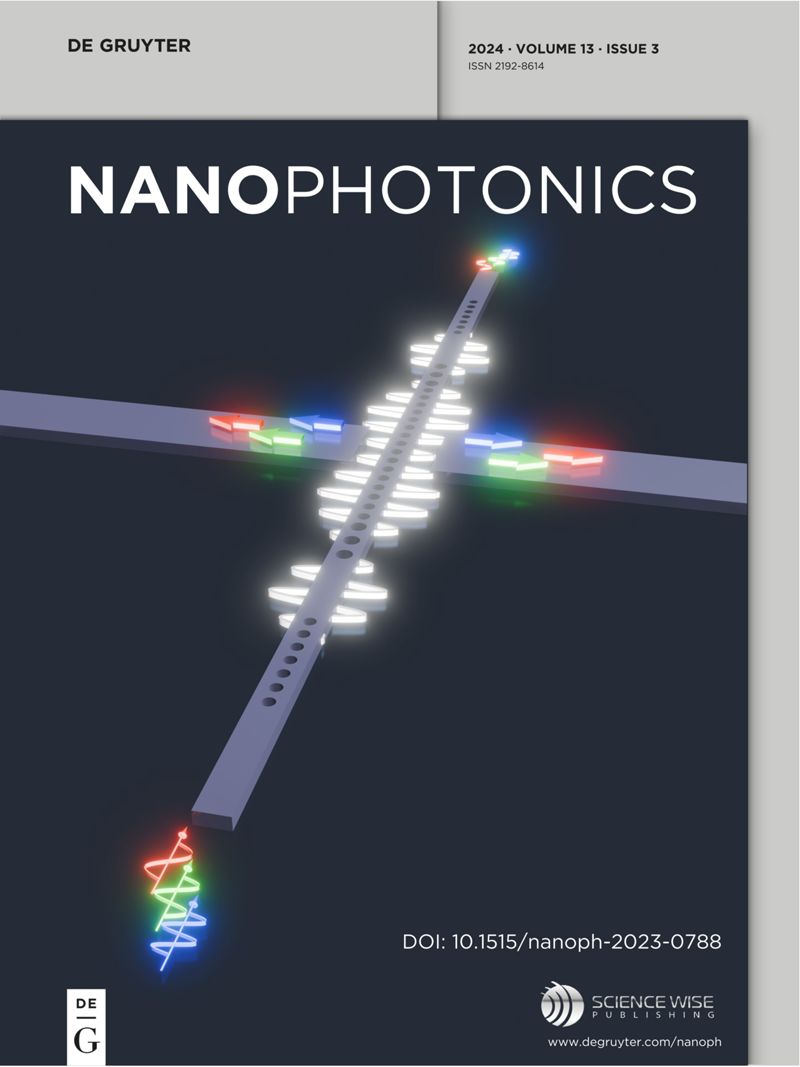用于片上光子集成的SiO2/Si复合柱型光机械晶体
IF 6.6
2区 物理与天体物理
Q1 MATERIALS SCIENCE, MULTIDISCIPLINARY
引用次数: 0
摘要
一维光子晶体(1D-PhC)柱腔允许将机械柱振动转导到光学域,从而放宽了通常与机械运动检测相关的要求。在这项研究中,我们将这些几何形状整合到绝缘体上硅光子学平台中,并探索它们的光学和机械特性。1D-PhC结构由直径为纳米尺寸的高纵横比纳米柱组成的线性阵列组成,旨在增强横磁(TM)偏振光场与机械振动之间的相互作用,并最大限度地减少光泄漏到衬底。集成波导被设计成支持类似tm的模式,这使得通过倏逝波相互作用与1D-PhC光腔模式的优化耦合成为可能。有限元模拟和实验分析表明,这些空腔具有相对较高的光学质量因子(Q ~ 4 × 103)。此外,模拟和实验测量的机械振动频率表明,对于基本的类悬臂模态,光-力学耦合率超过1 MHz。通过调整1D-PhC和波导之间的分离,我们实现了最佳的光学耦合条件,使热激活的机械模式能够在广泛的频率范围内转导-从几十到几百MHz。这提高了机械运动转导的可及性和效率,大大增强了基于纳米线、纳米棒和相关结构的现有微机电(MEMS)和纳米机电系统(NEMS)技术的可行性,特别是在力传感和生物传感等应用中。本文章由计算机程序翻译,如有差异,请以英文原文为准。
Hybrid SiO2/Si pillar-based optomechanical crystals for on-chip photonic integration
One-dimensional photonic crystal (1D-PhC) pillar cavities allow transducing mechanical pillar vibrations to the optical domain, thereby relaxing the requirements typically associated with mechanical motion detection. In this study, we integrate these geometries into a silicon-on-insulator photonics platform and explore their optical and mechanical properties. The 1D-PhC structures consist of a linear array of high aspect ratio nanopillars with nanometer-sized diameters, designed to enhance the interaction between transverse-magnetic (TM) polarized optical fields and mechanical vibrations and to minimize optical leaking to the substrate. Integrated waveguides are engineered to support TM-like modes, which enable optimized coupling to the 1D-PhC optical cavity modes via evanescent wave interaction. Finite element method simulations and experimental analyses reveal that these cavities achieve relatively high optical quality factors (Q ∼ 4 × 103 ). In addition, both simulated and experimentally measured mechanical vibrational frequencies show large optomechanical coupling rates exceeding 1 MHz for the fundamental cantilever-like modes. By tuning the separation between the 1D-PhC and the waveguide, we achieve optimal optical coupling conditions that enable the transduction of thermally activated mechanical modes across a broad frequency range – from tens to several hundreds of MHz. This enhanced accessibility and efficiency in mechanical motion transduction significantly strengthens the viability of established microelectromechanical (MEMS) and nanoelectromechanical systems (NEMS) technologies based on nanowires, nanorods, and related structures, particularly in applications such as force sensing and biosensing.
求助全文
通过发布文献求助,成功后即可免费获取论文全文。
去求助
来源期刊

Nanophotonics
NANOSCIENCE & NANOTECHNOLOGY-MATERIALS SCIENCE, MULTIDISCIPLINARY
CiteScore
13.50
自引率
6.70%
发文量
358
审稿时长
7 weeks
期刊介绍:
Nanophotonics, published in collaboration with Sciencewise, is a prestigious journal that showcases recent international research results, notable advancements in the field, and innovative applications. It is regarded as one of the leading publications in the realm of nanophotonics and encompasses a range of article types including research articles, selectively invited reviews, letters, and perspectives.
The journal specifically delves into the study of photon interaction with nano-structures, such as carbon nano-tubes, nano metal particles, nano crystals, semiconductor nano dots, photonic crystals, tissue, and DNA. It offers comprehensive coverage of the most up-to-date discoveries, making it an essential resource for physicists, engineers, and material scientists.
 求助内容:
求助内容: 应助结果提醒方式:
应助结果提醒方式:


